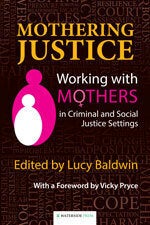
Within Europe HMP Holloway is known as the largest women's prison. Its facade was built to replicate Warwick Castle. Since the early campaigns of Elizabeth Fry, the issue of women in prison has been central to the agenda of prison reformers. During the 1960's HMP Holloway was refurbished and research during the 1970's found that HMP Holloway used a treatment model. At this time, female offending was seen as symptomatic of mental illness and psychiatric treatment should be the norm.
During the 1990's HMP Holloway became central to scandals about pregnant women who were shackled during childbirth as well as being central to the introduction of mother and baby units. Changes in policy and research have meant that the international and national communities have talked about and implemented changes that have been justified in terms of being gender-responsive. This idea has been controversial due to many women being imprisoned for non-violent crimes and a call from prison reformers for changes to sentencing.
Today there has been an announcement that HMP Holloway will close. While to many prison reformers this news will be welcome, there is likely to be a sense of uncertainty. HMP Bronzefield is a private prison, that has not always had positive inspection reports. This prison is now going to be the main prison for women as well as a refurbished HMP Downview. Campaigns for less women in prison and smaller, local prisons does not look as though it will be a reality.
The second major change is located within a report that has been released today from the Prison Reform Trust. Sentencing of mothers. This report has been designed as a discussion paper and focuses on the attitudes of magistrates. According to this report there is a need for more training of magistrates to understand the effects of imprisonment on mothers and children. This report aims to publicise the issue of sentencing for women in prison that the route into prison is complex and it is not necessarily a linear path from dealing with the police, courts and then the prison service. Not only does the criminal justice system contain a variety of different agencies with different occupational values but attitudes of decision makers such as judges or magistrates vary. Current sentencing for women in England and Wales means that many women serve short sentences, possibly for minor offences that can cause 'chaos and disruption to their lives and families, without any realistic chance of addressing their causes of criminality' (Corston, 2007). In 2009, women were given pre-trial or remanded custodial sentences for an average of four to six weeks in prison and over half of these women did not receive a custodial sentence (NOMS Women and Equalities Group, 2012). Concerns have been made by prison governors about the devastating effects of short sentences by highlighting how most interventions within prisons are for 12 weeks or more and these will exclude women on short sentences or remand (House of Commons Justice Committee, 2013). Although there are alternative community sentences, the range of non-custodial options for women is more limited than for men (Criminal Justice Joint Inspection, 2011).
While this current report by The Prison Reform Trust is requesting that more research is needed about how children are affected, there has been a recent book and research that has specifically focused on mothers in prison.

This book has been written by experts with first-hand experience. Mothering Justice is the first whole book to take motherhood as a focus for criminal and social justice interventions. Covering the spectrum of interventions it also makes a powerful case that in particular the imprisonment of mothers and its effect on their children is unnecessary, unjust, devastating and wasteful. 'To afford justice to these women, we must "do" justice to motherhood.'
For practitioners by practitioners this highly informed collection will be of great value to course providers across a range of disciplines and groups dealing with women's issues. This book is designed as a workbook for course providers and students across a range of disciplines. With more publicity and co-operation between the prison service, policy-makers, researchers and practitioners maybe imprisonment for women will really change and be a phenomenon of history. For more information and resources relating to women in prison, see a newly established blog called research for women in prison at www.r4womeninprison.com.
